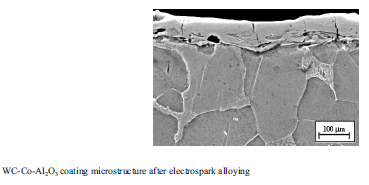@tbelna, Materials science provides scientific evidence that even in sintering of cermets such as silicon carbide, diffusion of grains to other grains boundries creates a bond which we call "diffusion bond" which is a "metallurgical bond" On a lighter side having played football in the old world, where we actually use out FOOT to keep kicking the ball, I found it hilarious that in the New World it is called by some other name "SOCCER". In the land of the free and the home of the braves, the appellation "Football" is usurped for a game where the foot was used only twice to progress the ball towards the goal. It is mostly push and shove and throw.
Therefore, if you insist that it is a mechanical bond, then have it your way. A rose by any other name smells just as sweet (if you do not have an allergy to rose). The Materials Science Engineers call any bulk bond by a process such as melting, diffusion or even surface migration, etc., a metallurgical bond if the atoms in the bond are held by the interatomic force and do not fall apart by mere attrition. In the galvanizing of steel a metallurgical bond is created by the reaction of zinc atoms with iron atoms. In ESD the carbides and borides of W,Ti,Cr, etc dissociate at the localized high temperature created in the electric micro-arc, and get incorporated with the substrate elements. We call this a metallurgical bond. But if you want to emulate calling a legitimate football as soccer, and wish to "think" that a diffusion bond is a mechanical bond, have it your way, We live in a free country with the freedom of expression. But the wear resistance of ESD coatings with cermets is an established scientific fact based on hard experimental evidence.
"Goodwill towards all and Malice to none"

